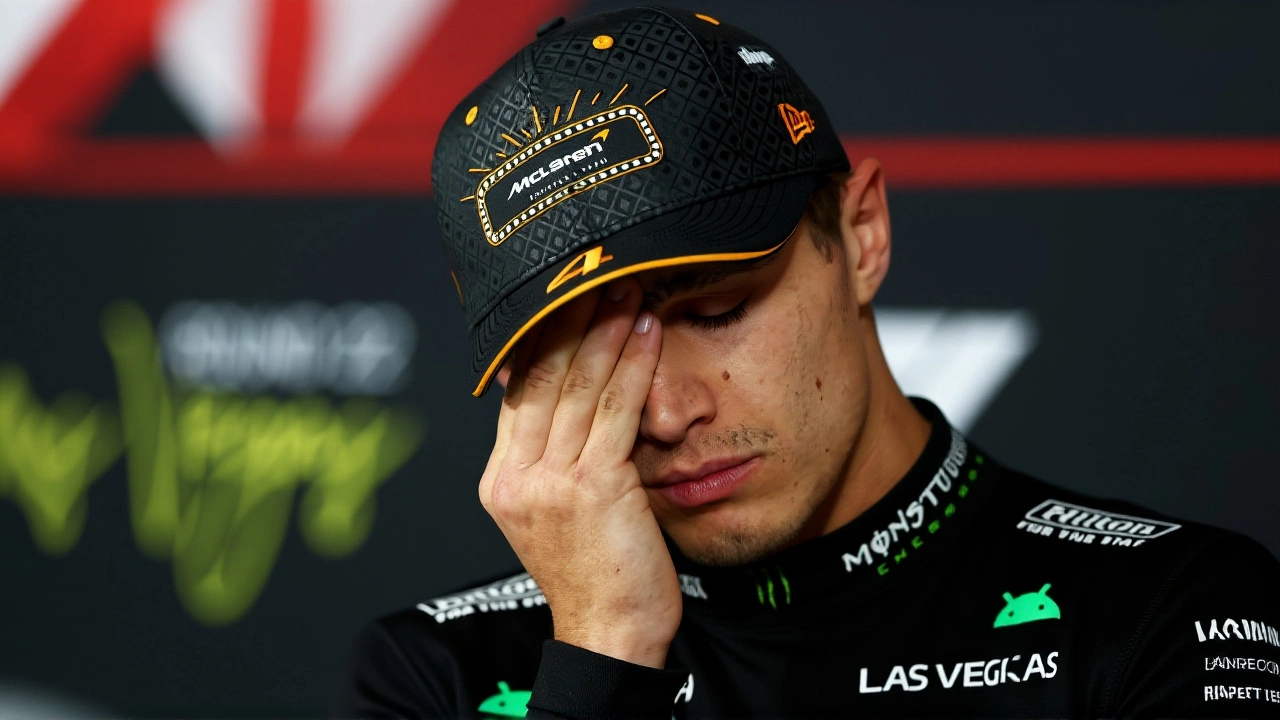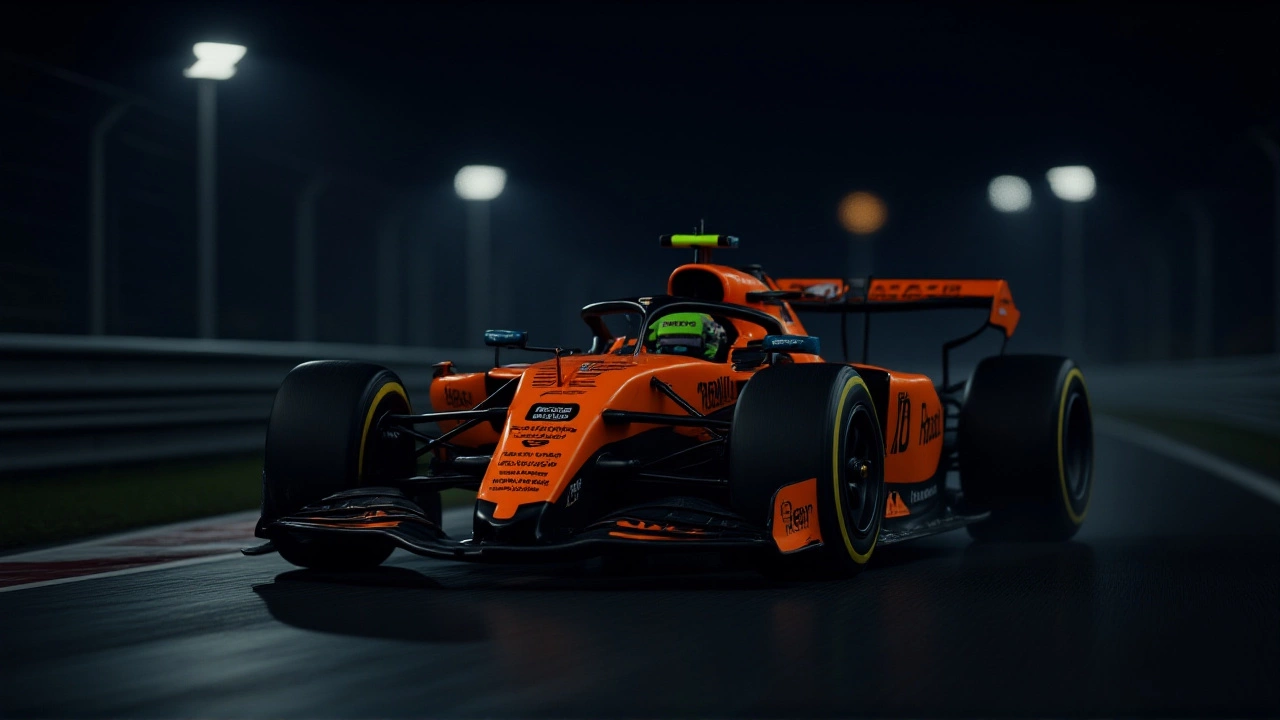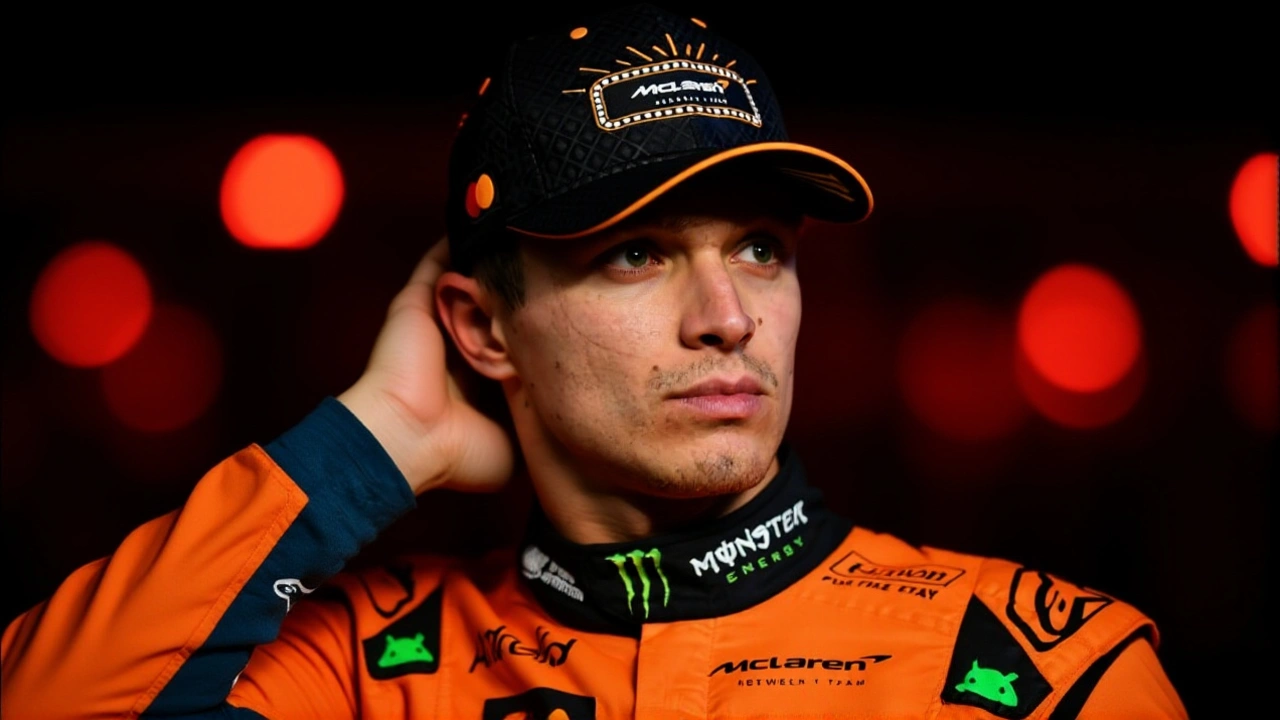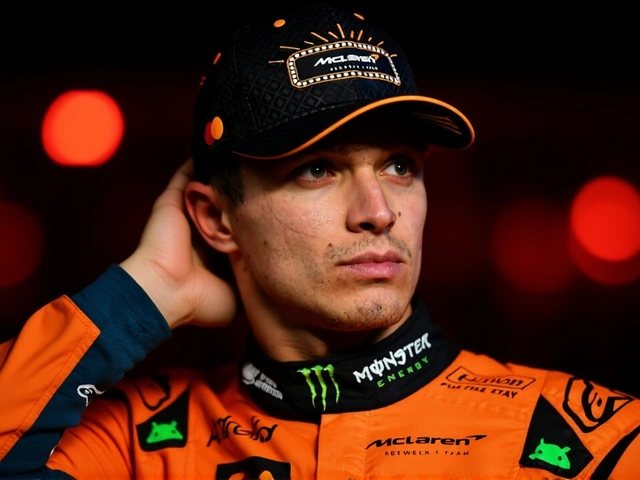When Lando Norris crossed the finish line in second place at the Las Vegas Grand PrixLas Vegas Strip Circuit on Sunday, November 23, 2025, he thought he’d solidified his grip on the Formula One championship. Two hours later, he was stripped of his podium finish — and 18 championship points — along with teammate Oscar Piastri. The reason? Both McLaren Racing Limited MCL39 cars had worn down their titanium skid blocks below the legal 9.0 millimeter minimum. It wasn’t a crash. It wasn’t a penalty call mid-race. It was a quiet, brutal technical violation that rewrote the championship narrative overnight.
The Violation: More Than Just Wear and Tear
The FIA’s technical delegates, Andrea Sanna and Nina Ziebell, measured the rearmost skid block — the titanium plate beneath the car designed to prevent excessive ground clearance — and found Norris’s car at 8.7 mm, Piastri’s at 8.6 mm. Both were below the 9.0 mm threshold. The readings were confirmed twice, in front of McLaren’s technical staff. No one argued the numbers. The FIA’s verdict, documented in SPT-2025-11-23-01, was unambiguous: “Jurisprudence is consistent: a technical violation, even accidental, leads to disqualification.”
Here’s the twist: McLaren didn’t cheat. They didn’t try to manipulate the floor. The team’s explanation, delivered by team principal Andrea Stella, was rooted in reality. Las Vegas brought unseasonably cold temperatures, intermittent rain, and only two short practice sessions — far less than the usual three. Without long runs, they couldn’t dial in the ride height properly. "We were flying blind," Stella told journalists. "We knew the car was running close to the limit, but we didn’t have the data to confirm how close."
Industry veteran Gary Anderson, former Jordan Grand Prix technical director, put it bluntly: "McLaren’s been flirting with the plank limit all season. They’ve been chasing downforce on a car that’s inherently unstable. Las Vegas? That track’s like a washboard. Every bump jolts the floor up and down. One too many hits, and the skid block grinds away faster than you think."
The Championship Domino Effect
Before the race, Norris led with 390 points. Piastri sat at 378. Max Verstappen, the Red Bull driver, trailed at 372. After the disqualifications, Norris still leads — but now by just 24 points. Piastri and Verstappen? They’re tied at 366. And here’s the kicker: Piastri is still ranked second because he has two wins this season, while Verstappen has just one. The championship isn’t Norris vs. Verstappen anymore. It’s a three-way free-for-all.
With only two races left — Lusail International CircuitDoha, Qatar on November 30, then the finale in Abu Dhabi on December 7 — just 48 points remain up for grabs. That’s barely enough to cover one race win. And now, Verstappen isn’t just chasing Norris. He’s chasing Piastri too. The pressure on McLaren just doubled.

Why This Matters Beyond the Points
This isn’t just about who wins the title. It’s about trust. Formula One fans remember the 2021 Abu Dhabi finale — the controversial last-lap decision that handed Verstappen the championship. This isn’t that. There’s no conspiracy. No favoritism. Just cold, hard regulations. And that’s what makes it sting.
McLaren’s been on the rise this season. They’ve been the only team seriously challenging Red Bull. But this disqualification exposes a vulnerability: they’re pushing the limits of their car’s aerodynamics — and their own preparation. "They’ve been running a tightrope," said one senior FIA technical official who spoke off the record. "They’ve been winning because they’re brave. But bravery without data is just luck."
The FIA’s stance is firm: intent doesn’t matter. If the plank is below 9.0 mm, you’re out. That’s been the rule since 2001. And it’s been applied consistently — even when teams claim weather or mechanical damage caused it. In 2019, Ferrari lost a podium in Singapore over a similar violation. In 2022, Alpine was disqualified in Japan for the same reason. This isn’t new. But it’s rare to see it hit two drivers from the same team in the same race — and with the title on the line.

What Happens Next?
McLaren will likely make adjustments to their ride height setup for Doha, where the track is smoother and temperatures are more predictable. They may also reduce downforce slightly to protect the plank — a painful trade-off for a car that already struggles for straight-line speed.
Verstappen, meanwhile, is staying quiet. But his team’s engineers are studying every data point from Las Vegas. Red Bull’s car has always been more stable over bumps. They didn’t need to gamble. Now, they’re in the driver’s seat — literally.
And Norris? He’s got two races to prove he’s still the man to beat. He’ll need flawless weekends. No mistakes. No technical hiccups. And he’ll have to hope Piastri doesn’t outscore him — from within his own team.
Frequently Asked Questions
How does this disqualification affect Lando Norris’s championship chances?
Norris still leads with 390 points, but his advantage has shrunk from 18 to just 24 points over both Verstappen and Piastri, who are now tied at 366. With only 48 points available in the final two races, Norris can’t afford a single DNF or penalty. One bad weekend — or a strong run from either rival — could cost him the title.
Why didn’t the FIA give a lesser penalty like a time penalty or grid drop?
The FIA’s technical regulations are explicit: any violation of Article 3.5.9 regarding plank wear automatically triggers disqualification. This rule exists to prevent teams from gaining unfair aerodynamic advantage by running the car too low. Even if unintentional, the advantage is real — and the penalty is non-negotiable. No precedent exists for leniency on this specific rule.
Could McLaren appeal the decision?
McLaren could file an appeal, but it’s highly unlikely to succeed. The FIA’s technical delegates confirmed the measurements twice, in the presence of McLaren representatives. The stewards’ report states the violation was clear and the process was flawless. Appeals on technical infringements are rarely overturned unless procedural errors occurred — and none were cited here.
Is this the first double disqualification in F1 history?
No, but it’s extremely rare. The last time two drivers from the same team were disqualified for technical reasons in the same race was in 2007, when Renault’s Fernando Alonso and Giancarlo Fisichella were both excluded from the Monaco Grand Prix for fuel irregularities. In terms of plank wear violations, this is the first double disqualification since the rule was introduced in 2001.
What impact does this have on Oscar Piastri’s future with McLaren?
Despite the disqualification, Piastri’s performance this season has been stellar — he’s outscored Norris in five races and has two wins. His standing in the championship (second) and his consistency make him indispensable. McLaren has publicly backed him, and with his contract running through 2026, there’s no indication of internal tension. In fact, his rivalry with Norris may now be the team’s greatest asset.
How will the Las Vegas circuit affect future races with similar conditions?
The FIA may now require teams to submit ride height data before and after the race on bumpy circuits like Las Vegas. Teams will likely add extra skid block material as a buffer, or reduce downforce settings to avoid similar violations. This incident will force a rethink of how teams manage wear on temporary street circuits — especially when weather limits practice time.







Write a comment